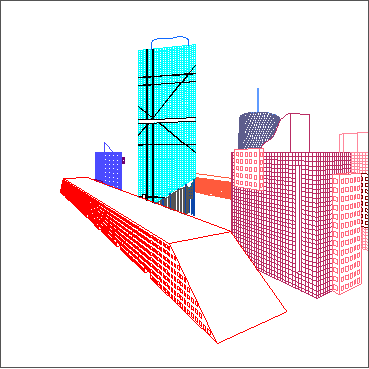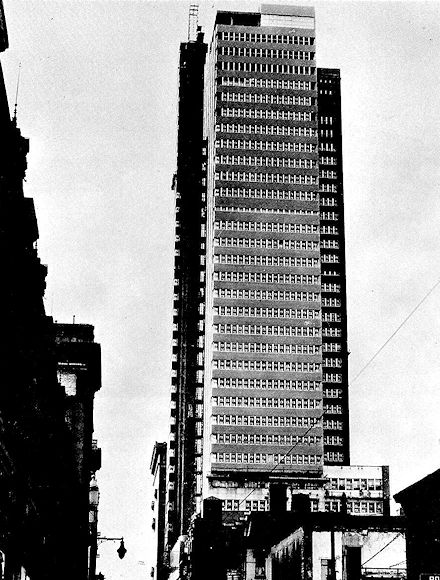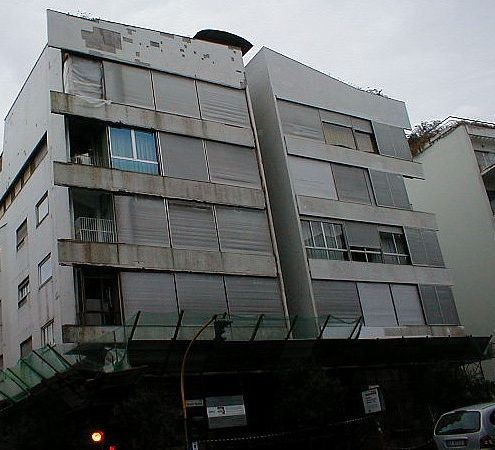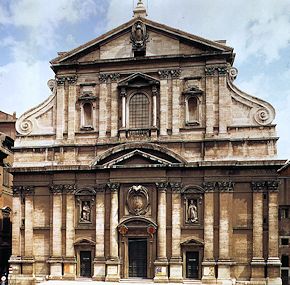2015.06.08 13:20
New photos of E. Fay Jones' Thorncrown Chapel unveiled to mark 35th anniversary
A week or two ago, I saw some images of Wright's Imperial Hotel (Tokyo, 1915-22) and then seriously started to wonder whether this Wright design was a bit of a touchstone for VSBA's Hotel Mielparque Resort Complex (Nikko, Kirifuri, Japan, 1992-97). A view of the Imperial Hotel's Peacock Room Banquet Hall is particularly evocative of the 'decorativeness' at Hotel Mielparque. I was once told that Venturi is/was very private as to the 'inspirations' behind any given project, so one is then more or less left guessing, thus I don't find it hard to imagine Venturi looking at an(other) earlier leading American architect's hotel architecture in Japan as he himself was about venture into designing a very similar type of project.
Implanting oneself into a 'tradition' or "when an American designing a hotel in Japan, do what Wright would do."
Just a minute ago read this in Stanislaus von Moos, Venturi Scott Brown & Associates 1986-1998: "The colored rendering of the [Hotel Mielparque] spa building, first of all, recall Frank Lloyd Wright."
2015.06.09 17:13
Renderings of BIG-Designed Two World Trade Center Revealed
The earliest stacked-box skyscraper design that I know of is within Arquitectonica's Capital Park West (1983).

In many ways, Arquitectonica can be considered the ur-OMA spinoff. Remember, Spears and Koolhaas worked together just before Arquitectonica (and OMA) was formed. And, while Capital Park West was never executed, they were nonetheless the first architects to get 'delirious New York' type architecture built, well before Koolhaas and Zenghelis themselves.
Thus I now wonder whether BIG's WTC2 will be the first stacked-box skyscraper actually built. I'm trying to think of some other such project(s) that already exists, but I'm drawing a blank--please let me know if there is. I know H&dM's NYC luxury hi-rise currently under construction, but that's a bit more voxelation than stacked-box, and there's, of course, the New Museum, but that's not really a skyscraper.
ps
Arquitectonica's Capital Park West is clearly a decendent of Leonidov's Dom Narkomtjazjprom project.
| |
2015.06.09 17:45
Renderings of BIG-Designed Two World Trade Center Revealed
Although it hasn't been mentioned as such, the cantilever of the stacked boxes is the distinguishing feature of this stacked tower genre. And the precedent for modern skyscraper with stacked cantilever is the PSFS Building.

2015.06.19 10:33
Are diagrams in architecture bullshit and ditto for process?
"The Duck and the Decorated Shed" came within a year or two after the completed construction of Guild House (1961-66), coinciding with the marriage of Robert Venturi and Denise Scott Brown--23 July 1967.
Before Guild House there is George Howe's Maurice Speiser House (1933) and Louis Kahn's Congregation Ahavath Israel (1935-37) (Venturi's immediate Philadelphia architecture legacy) and Moretti's Casa "Il Girasole (1947-50) (effect of Venturi's study in Rome 1954-56).

| |
2015.06.22 17:40
View from the Farnsworth House may soon be a lot drier
...I like that line of thinking. A chain-link version of the Farnsworth House is especially intriguing. As to a "Ghost Structure," the Farnsworth House already is that--just remove the glass and the interior "walls."
2015.06.24 14:29
Why are people so fascinated with classical architecture?
It's a big mistake to think that "today almost all residential homes are modeled off of classicism or the Roman villa." There are faint traces of 'classical' details sometimes here and there, but, overall, classicism or the Roman villa are not today's predominate housing paradigm.
2015.06.29 14:26
Why are people so fascinated with classical architecture?
"In a nutshell, (some) people are so fascinated with classical architecture because it teases the soul with the prospect of there being, in fact, an eternal ideal worth striving for. This eternal ideal, according to Classical Thought, exists independent of ephemeral social or individual fallacies of thought or beliefs. It affirms the purpose of an infinite, eternal existence as being the limitless pursuit of truth, happiness, virtue, and the divine destiny of those who propose to be more than the sum of their ephemeral motivations and propose to be more than just another unconscious beast laboring in the field."
Is that what Nero said upon entering his new Golden House (which he had built after the notorious fire made room for it), or is that what Hitler said upon entering Die Neue Reichskanzlei?

2015.06.29 14:53
Why are people so fascinated with classical architecture?
So, you've studied the proportions of Il Gesu and found the proportions to be "pretty much perfect"? What exactly makes the proportions so prefect? Is your study of Il Gesu available for others to study?
I'm not so sure the size of that shield over the center door is so perfect--it's oversized. The relationship of the arc pediment over the pointed pediment is a bit too squeezed. And, over all, the whole attic elevation is better proportioned than the whole entrance elevation.
| |
2015.07.02 12:40
Why are people so fascinated with classical architecture?
Volunteer, all you're doing is confusing the issue, which, as far as I'm concerned, is architectural design manifestations of the Classical Ideal in the 21st century.
Read your Harbeson to see/learn how size, scale and proportion need to work in tandem.
Generally, I agree with tintt and Miller in calling out historical examples of architecture in terms of their respective periods and styles, instead of naming anything with a classical order, pediment or some moldings as 'classical'. Antique classical architecture pretty much ended with the reign of Maxentius in Rome. And, while Maxentius was ruling in Rome, Constantine was ruling in Treves (today's Trier, Germany), and we see there the beginnings of 'Roman' architecture exhibiting a strong influence from the eastern half of the Empire (you can even say the very roots of Romanesque). The first half of the 4th century comprised a huge paradigm shift in 'Roman' architecture, not least of which was the moving of the Imperial capital to Constantinople. This is where Seroux d'Agincourt's The History of Art through Its Monuments from Its Decline in the Fourth Century to Its Renewal in the Sixteenth starts off--'middle-aged' European architecture is remarkably exuberant.
And for a concise overview of 'size, scale and proportion' see the Grande Durand, where all the plans are at the same scale and all the elevations are at the same scale (but all the elevations are twice the scale of their respective plans).
2015.07.02 20:06
Why are people so fascinated with classical architecture?
The Parthenon was already 10 years old when Plato was born, and he was 22 years old when the Erechtheum was complete. It's hard to imagine how Plato's writings and interpretations can be regarded as the "underpinnings, foundation, genesis of Classical Architecture."
"When it come to mythical origins and first ideal forms, it is worthwhile to ask if the mythical origins and the first ideal forms are themselves reenactments. For example, the manifestation of Shiva reenacts metabolism. Moreover, might not Plato's ideal forms [like his Socratic dialogues] also be reenactments (albeit highly abstracted)? Perhaps Plato's perfect circle 'ideally' reenacts the pupils of our eyes and Plato's perfect triangle 'ideally' reenacts the nose on our face."
2015.07.03 10:22
Why are people so fascinated with classical architecture?
Did lots of reading last night.
Started with Demetri Porphyrios' "Classicism is Not a Style" (1982)--"Classical architecture constructs a tectonic fiction out of the productive level of building. The artifice of constructing this fictitious world is seen as analogous to the artifice of constructing the human world. In its turn, myth allows for a convergence of the real and the fictive so that the real is redeemed. By rendering construction mythically fictive, classical thought posits reality in a contemplative state, wins over the depredations of petty life and, in a moment of rare disinterestedness, rejoices in the sacramental power it has over contingent life and nature."
Then read DP's "Cities in Stone" (1984)--"The locus classicus for the conviction that there exists a universal and rational certainty about architecture and the city has been, of course, Vitruvius, Filarte or Alberti. But whereas for the classical world this foundation of certainty was God's divinity, for the post-Enlightenment world of modernity human reason was to take the place of God. Descartes' Meditations stand as the great rationalist treatise of modern times and his demand that we should rely only upon the authority of reason itself has been at the very center of modern life. And in his Critique of Pure Reason, Kant describes 'the domain [of pure reason] as an island, enclosed by nature itself within unalterable limits. It is the land of truth--enchanting name!--surrounded by a wide and stormy ocean, the native home of illusion...'"
I'm beginning to think that if I found DP's successive writings, I'd also find the evolution of whole new 'philosophy of classicism', one that parallels a small group of contemporary architect's straight imitation/copying of late 19th century Beaux-Arts stylings.
Then I remembered Joseph Rykwert's "Classic and Neo-Classic" (1977), and, while looking for that on my bookshelf, I also found Porphyrios's "The 'End' of Style" (also 1977 but after Rykwert)--"Thus, the nineteenth century produced no theory of origins--unlike Classical and Enlightenment architectural thought." I think this marks the beginning of DP's own "theory of origins".
Alas, it is within Rykwert's "Classic and Neo-Classic" that the history of "classic" is found: "the word [classic] refers to an ancient tradition. The sixth king of Rome, Servius Tullius, graded all Roman society into six groups called classes according to their income; all were expected to contribute money to the defense of the state, except the lowest, the proletarii, who had no money to contribute and therefore could only give their children, their proles. Ancient writers derived the word classicus from calare, "to call" (classicus was a contracted form of calassicus); the word was even applied to the trumpets with which Romans assemblies were summoned, and this meaning was retained throughout the Middle Ages. By the time of the late Rebuplic, however, the word classicus was no longer used for the members of any class but the first, or the richest. ... By the seventeenth century, classicus, "classic" meant not only excellent and choice, or first-class, but also antique, the antique had by then assumed the role of an unquestioned and unquestionable model of excellence. Not only writers, painters, and architects, but also statesmen and religious reformers based their practice or policy on the emulation of the antique."
Also did some reading in Samir Younes' The True, the Fictive, and the Real" The Historical Dictionary of Architecture of Quartremere de Quincy (1999) which provided a somewhat unique interpretation of how architects are to employ the history of architecture, and this morning found Bruno Foucart's "The modernity of neo-greeks" (1982) which starts with a most provocative statement: "In fact, the liberation of Greece and its opening up to the Western World coincided with the end of the Neo-Classical period."
| |
2015.07.03 10:29
Why are people so fascinated with classical architecture?
...here's another passage from Rykwert's "Classic and Neo-Classic": "But if you were to take a look at current dictionaries, you would find that the German Grosser Brockhaus takes [neo-classicism] to refer to the more sober twentieth-century architecture (August Perret, Adolf Loos, Mies van der Rohe, Peter Behrens, Gunner Asplund)..."
 
2015.07.10 11:39
Snarkitecture's 10,000 sq ft indoor BEACH at the National Building Museum
I remember the first time I saw such a plastic ball environment--it was the kid's play area at the first USA IKEA, Plymouth Meeting, PA circa September 1986. Of course, the area was much smaller, and the balls were multi colored, but it was essentially the same thing as what's at the National Building Museum this summer. It would be a strange piece of architectural history if the IKEA kid's play room was the first plastic ball environment in the USA. And, if so, was the idea imported from Sweden or Europe in general?
|